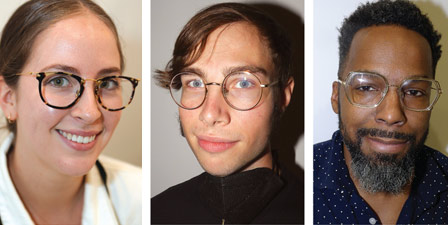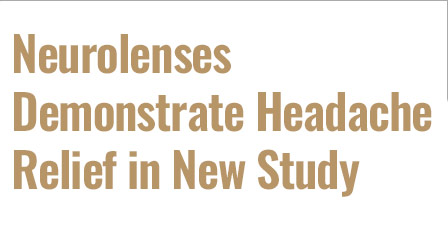Measurement of intraocular pressure is a cornerstone of glaucoma care. Now the Newton, a new invention from Steven Feldon, MD—the man who developed the Tonopen—aims to combine the portability of a Tonopen with the accuracy of a Goldmann tonometer.
“I wanted the new device to be a definitive measuring tool rather than just a screening device,” Dr. Feldon says. “I also wanted to create a robust instrument with high reliability. The Tonopen gets out of adjustment pretty easily, and its repair record isn’t great.”
Dr. Feldon says the Newton, which weighs about as much as the Tonopen, has several advantages over both the Tonopen and the Goldmann tonometer. “First of all, the Newton is likely to be more accurate than the Tonopen,” he says. “It’s a far more complex instrument using different technology. Also, the new tool is solid state with no moving parts, so no internal cleaning is ever necessary. It should hold up well in the field.
“Compared to the Goldmann tonometer, portability is the major advantage. To use the Goldmann, the patient has to be able to sit at the slit lamp and cooperate with the exam. In contrast, the Newton can be used in any position. Also, the Goldmann tonometer requires fluorescein, which patients don’t like. It turns their eyes yellow and drips on their clothing and stains it. This instrument uses a transparent topical anesthetic like the Tonopen.”
How It Works
To increase accuracy, the Newton’s technology is designed to collect far more data than either the Tonopen or the Goldmann tonometer. Here’s what happens during use:
A fiber-optic-based visual portal on the top of the instrument lets the doctor see through the tip of the instrument so it can be positioned to touch the cornea as close to the center as possible. Touching the tip to the corneal surface takes about half a second. During that time the instrument uses an internal video camera to capture about 18 images (36 images per second).
A light source inside the instrument causes the flattened area of the cornea to be visible as a dark, circular outline. As the pressure being applied increases and then decreases, the Newton measures and records the diameter of the circle in each sequential image and pairs that measurement with the amount of force being applied at the time.
The instrument treats the data pairs (force/flattened area) as points on a curve and performs a linear regression. The slope of the curve represents the IOP, and the correlation coefficient of the curve (which determines how close the graphed data points are to a straight line) indicates the quality of the measurement. The Newton provides a digital readout of both the calculated IOP and measurement quality.
To meet the Food and Drug Administration’s requirement for a safe material to contact the cornea, the Newton uses disposable tips made of an approved material. Dr. Feldon says they refer to the disposable tips as Eyesacs. (Get it? “Eyesac Newton.”)
According to Dr. Feldon, results of tests that calibrated a pre-production prototype of the Newton against an artificial eye suggest that the Newton’s measurements were as accurate as those made with the Goldmann tonometer or Tonopen, matching or improving upon their levels of variability. (See Figure 1.)
Ensuring Accuracy
A number of factors can potentially affect the Newton’s accuracy:
• Doctor technique. “It takes a while to get used to the new technique,” notes Dr. Feldon. “It’s similar to using the Goldmann tonometer, but the Goldmann is attached to a slit lamp, which holds the instrument rigid. Here you have to learn to use a similar touch, but do it freehand.”
• Patient cooperation. “If the patient is squinting or moving, you may not get as good a measurement,” notes Dr. Feldon, “but at least the Newton will let you know if the reading is questionable.”
• Larger data sample. To increase accuracy, the Newton accumulates data from two to four consecutive readings done within a few seconds of each other. As a failsafe, the instrument also provides an interim reading based upon the first contact, in case an uncooperative patient backs away after the first touch.
• Angle of approach. If the instrument isn’t positioned at a right angle to the corneal surface, the circle that indicates the extent of applanation will become an ellipse, throwing off the measurement.
“The Newton won’t take a reading unless the image is nearly circular,” says Dr. Feldon. “There are 25,000 lines of computer code built into the instrument, and most of it evaluates how good the measurement of the diameter is.
“Of course,” he adds, “there’s a trade-off between usability and precision. We may alter that depending on the results of further clinical testing.”
• Corneal thickness. “I’m hopeful that the Newton’s measurements will be less influenced by corneal thickness than Goldmann tonometry is, because it takes measurements at multiple degrees of corneal flattening,” says Dr. Feldon. “We’re planning to conduct careful clinical trials with this in mind.”
Comparing Technologies
A prospective beta-site trial in human patients sponsored by Marco (Jacksonville, Fla.), which has licensed the device and hopes to market it, should be under way shortly. The principal investigator for the trials is Brian Francis, MD, who practices at the Doheny Eye Institute in Los Angeles. He recently began using the new instrument in preparation for the trials.
“The Newton is likely to be more accurate than the Tonopen because it’s an applanation tonometer, like the Goldmann,” notes Dr. Francis. “The Tonopen doesn’t work on the same principle, which may be why it tends to underestimate high pressures and overestimate low pressures.
“In practice, the Newton is easier to use than the Goldmann tonometer,” he adds. “It doesn’t require as much technician training. On the other hand, it’s a little more challenging than the Tonopen because you have to hold the instrument at the right angle and watch for visual cues that tell you if you’re pressing too hard.”
Dr. Francis notes one advantage the Tonopen has over the Newton. “The Tonopen measures such a small area that you can use it in many locations on the cornea. But a true applanation device like the Newton requires a bigger surface area, so you need to take measurements at the central cornea. If a patient has a corneal scar, you may have to use the Tonopen.”
Dr. Francis says that beta testing of the Newton at the Doheny Eye Institute will begin soon. “So far,” he says, “we’ve only tested it on a handful of patients, but it seems to correlate well with the Goldmann tonometer.”
Despite his limited experience with the device, Dr. Francis is optimistic about its potential. “The Newton will probably become at least as popular as the Tonopen,” he says. “If it turns out to be as accurate as the Goldmann, it could become the instrument of choice.”













